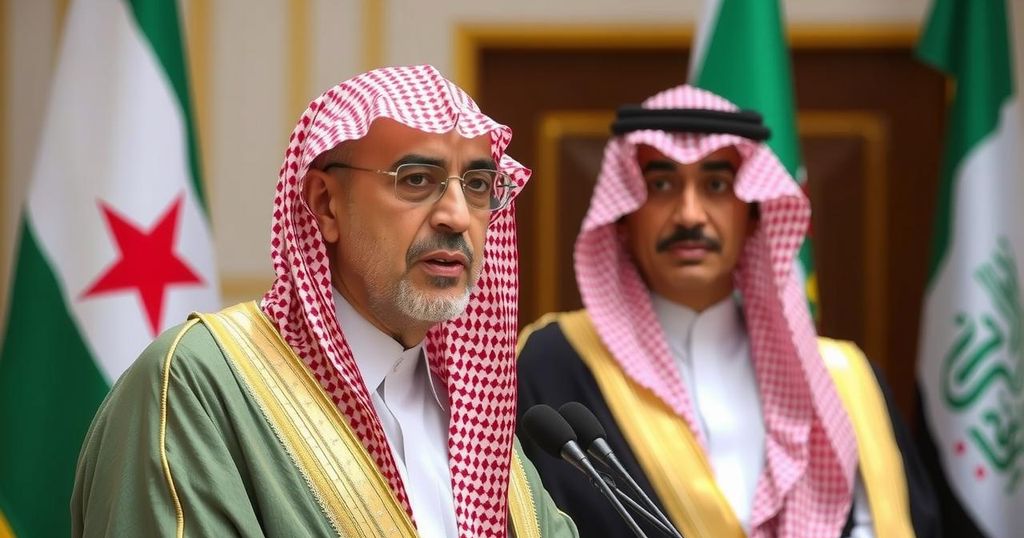This article addresses the ongoing struggles faced by Syria and Libya following the Arab uprisings. It examines Libya’s descent into chaos post-Qaddafi, highlighting political failures and violence, while also reflecting on the renewed hopes for resolving Syria’s long-standing civil conflict. The complexities of foreign involvement, calls for justice, and recent electoral developments in both countries are highlighted.
In 2011, the Arab uprisings sparked Western hopes for renewed prosperity in the Middle East and North Africa. Instead, these events initiated a prolonged period of suffering, particularly evident in Syria, where an ongoing civil war has left millions affected. Nearly fourteen years post-uprising, there appear to be glimmers of hope for Syria’s future as the regime of Bashar Assad is challenged by a fragmented opposition. However, there is a palpable fear that the country could replicate Libya’s trajectory of chaos and division.
The situation in Libya has become synonymous with state failure since the NATO-backed overthrow of Muammar Qaddafi, leading to a power struggle among competing factions and rampant criminality. Despite the potential for unification following recent national elections, political stalemate and violence have continued cyclically, thwarting reconciliation efforts and underscoring the persistent turmoil within the nation.
In recent developments, the UN special envoy, Abdoulaye Bathily, resigned due to political intransigence, emphasizing the leaders’ unwillingness to shift from the status quo. The ongoing clashes between armed groups exacerbate the suffering of citizens, raising fears that Libya’s plight will deepen. In addition, incidents of violence throughout 2024 have demonstrated the fragility of peace, with public outcries for justice emerging amid rampant corruption and human rights abuses.
Despite dire circumstances, steps toward accountability have been observed, as witnessed in a court’s sentencing of officials for negligence in a disastrous dam collapse. This judgment, however, contrasted sharply with the pervasive absence of systemic reform necessary for genuine progress. Emerging from these events, Libya’s energy economy has faced severe challenges due to factional disputes, further destabilizing the already compromised governance structure.
The presence of foreign powers and militarized factions compounds Libya’s struggles. The recent assassination of a notorious coastguard commander, tied to allegations of human trafficking, highlights the lawlessness rampant in the region, along with criticisms aimed at the EU’s reliance on Libyan authorities accused of abusive practices. As October drew closer, the International Criminal Court’s unsealing of war crimes warrants pointed toward a renewed focal point on accountability, albeit amidst an atmosphere of severe judicial weakness.
November’s municipal elections provided a brief respite from ongoing tensions, though skepticism remains regarding their actual impact on Libya’s political landscape. With the country now intertwining the realities of migrant crises alongside persistent violence, international actors continue to engage in the power dynamics at play, particularly as Russian influence seeks to expand its footprint in Libya.
As Syria navigates its own complex transitional phase, the dire situation in Libya serves as a stark reminder of the perils associated with unbridled factionalism and the entrenched interests of external powers overshadowing the aspirations of its long-suffering population.
The article examines the aftermath of the Arab uprisings that began in 2011, focusing on Syria and Libya as case studies. With Syria experiencing a civil war following its uprising, and Libya caught in a cycle of violence and political fragmentation since the ousting of Muammar Qaddafi, both nations exemplify the challenges faced by governments struggling to maintain order and meet the needs of their citizens. The text explores various developments, including attempts at reform, elections, and foreign involvement, to provide context for the current situation in Libya, which contrasts with the nascent hopes for positive change in Syria.
In conclusion, the fates of Syria and Libya illustrate the challenges of transitioning from authoritarian rule to governance that effectively meets citizens’ aspirations. Libya’s repeated failures to achieve stability and the repercussions of foreign influence emphasize the critical need for cohesive governance. As Syria begins to chart its course amidst similar unsolved crises, Libya stands as a cautionary tale of the perils that can arise from internal fragmentation and external exploitation, ultimately highlighting the importance of unified national leadership and accountability in the pursuit of lasting peace.
Original Source: www.arabnews.com






